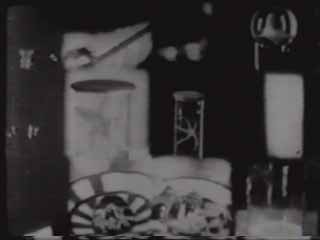Live Recording from Wilfried Kaets
Action
The main currents of the 1920s cinematic avant-garde are presented: first, the “abstract films” by Walter Ruttmann, featuring painted and drawn images and abstract forms in motion that undergo incredible transformations.
Then, the “absolute films” by Hans Richter and Henri Chomette, which boldly and daringly experiment with real footage, fast cuts, and harsh editing techniques, akin to the precursors of today’s music video aesthetics. These films showcase fantastically distorted faces, people in bizarre light-shadow effects, rapid journeys through tunnels, and astonishing reflections of water or crystals.
Intentionally provocative to audiences were the Dadaist films such as “L’étoile de mer” by the legendary photographer Man Ray and “Ballet Mécanique” by Fernand Léger. The encounter between a man and a woman, filmed through a glass pane by Man Ray, appears mysteriously obscured, with blur used as a stylistic device and the intertitles being as surreal as they are poetic.
A farcical fun full of mockery is “Vormittagsspuk” by Hans Richter, a film featuring flying hats, people as target practice, and grotesque scenes blending slapstick, Dadaism, and surrealism.



